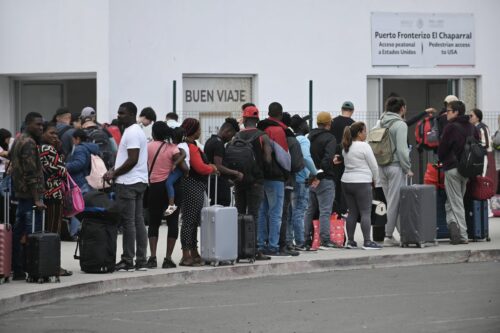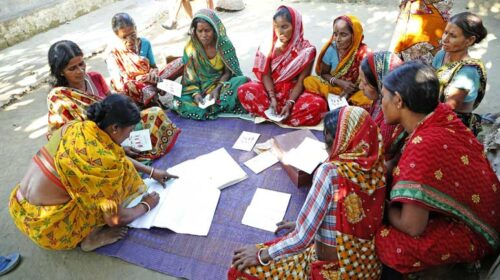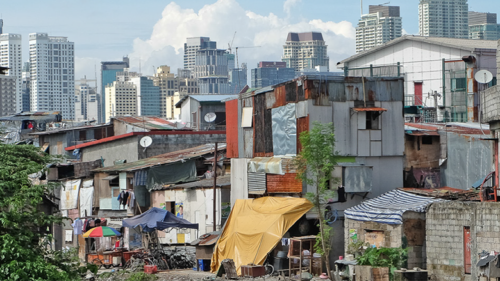

As poverty rates decline, the pursuit of further alleviating poverty and ensuring accessible opportunities for all remains a continuous effort. Absolute poverty, when an individual or household cannot afford the basic necessities needed, is being tackled with the promising measures of immigration and the remittances associated with migrants sending money back home, and Self-Help Groups (SHGs) to create multiple revenue streams within a household. In the context of developing countries, options such as upskilling a workforce may not be an obvious option as over 20% of their workforce is in the agricultural sector (Rose, 2023), making the maintenance of their agricultural income paramount. Although both strategies may seem viable on the surface, a deeper dive into the respective social and economic aspects of the two reveal the nuance of their overall impact on poverty alleviation.

Microfinance offers a potentially more sustainable path to economic freedom. Firstly, microfinance empowers the disadvantaged with the opportunity to set up their own businesses through which they can earn an additional income stream to support their households. This strategy is generally geared towards women because female participation in the economy has often been dismissed in developing countries. By allowing women the opportunity to join the workforce and with this additional income support their children to better education, poverty would be significantly reduced. In fact, studies show that only 6% of households that had both male and female earners experienced poverty (Naz, Ali and Aziz, 2010). Furthermore, government-endorsed microfinance schemes run through private SHGs can reach large populations (Aruna and Jyothirmayi, 2011). Thus, microfinance is a powerful tool in generating income and employment in rural areas, as evidenced by an increase in the mean value of income by 10 USD after appropriate use of microfinance loans (Esmaeil Zaei et al., 2018). Yet, microfinance could lead borrowers, who, disadvantaged and likely lacking in financial literacy, to fall into debt traps. High interest rates combined with the pressure to repay the loans may fuel a vicious cycle that drags borrowers deeper into poverty. However, while microfinance carries potential downsides, integrating basic financial education within its schemes can mitigate these risks, ultimately offering a sustainable path towards improved livelihoods.
On the other hand, immigration reveals paradoxical implications on the economy. Remittances can help the disadvantaged find suitable jobs in host countries and thus generate steady income for themselves and their home countries. Remittances generate positive effects on the economy through multiple ways, such as accelerating economic growth directly through increasing savings and investment in human and physical capital, as well as indirectly through increasing rural household consumption. The latter may bring about significant multiplier effects as this consumption is more likely to be spent on domestically produced goods (Meyer and Shera, 2017). Moreover, remittances, being on the credit side of trade, also improve the balance of payments of many developing economies. Yet, immigration could also engender negative economic impacts through productivity reduction, exchange rate appreciation, brain drain and over-dependency on the external economy. Remittances could undermine the growth of the economy as they could be more readily spent on consumption of imported goods and unproductive savings such as housing and jewelry (Charmi, 2005), rather than on productive investments. In addition, Hassan and Holmes (2013) contend that remittances inflows could increase domestic demand in the non-tradable sector, which, coupled with currency appreciation from these capital inflows, could reduce the competitiveness of the tradable sector – the export industries. Notably, immigration could be unsustainable in the long run if the country develops dependence on remittances. Studies done by IMF (Ratha, 2019) found that while remittances constitute approximately 6% of the GDP of low-income economies, they only account for 2% of the GDP of middle-income economies. Furthermore, immigration could also lead to brain drain, signifying that the most skilled and talented quit their country to contribute to the economies of host countries. With human capital being one of the most important factors of production – if not the most important, immigration as the sole strategy to poverty alleviation seems to be problematic.

Both SHGs and immigration have the ability to create profound social impact, however immigration possesses a key drawback associated with human rights and their freedom of movement. Oberman (2015) normatively argues that using immigration policy is incompatible with the basic human right of one’s own freedom of movement when used as the sole operator to alleviate poverty. According to The International Bill of Human Rights (1948), everyone has the freedom to both reside within their own State and leave their own country. A country receiving immigrants may be adversely affected as their poverty-stricken population can be deprived of their scarce resources in an accelerating environment of population growth. Their existing struggle for basic needs such as food, medical care and housing can be magnified and a government may restrict the inflow of immigration in response to protect their own citizens, justifiably tainting the human right in their freedom of movement. A more forward-looking sustainable solution may instead be addressing the local economic situation of the impoverished with their range of monetary instruments of redistributive taxation or expansion of educational opportunities. Similarly, Quazi (2006) posits a parallel take whereby the credit associated with microfinance to SHGs is seen as isolated from human rights as opposed to breaching them. The SHG model is based on 10-15 disadvantaged adult women organised into homogenous groups based on socio-economic background to form a collective debtor, with specific conditions such as regular meetings and record keeping of their finances, who use the money to create small businesses (Ahmad et al., 2020). Human rights are inherently unconditional, meaning entitlements or resources should not be withheld based on specific conditions. While microfinance institutions significantly lower the barrier to entry for loans compared to traditional institutions, it does not strictly meet the definition of a human right.
However, immigration policy differs from SHGs in its impact on human capital. While SHGs develop human capital within a population, immigration can catalyze negative social spillovers such as brain drain. Brain drain is defined as the migration of health professionals in search of better living standards, salary or more stable political conditions (Dodani & LaPorte, 2005). In the context of alleviating poverty, where immigration policy enables health personnel in impoverished countries to more easily access improved living conditions overseas, especially hurts the countries themselves in their ability to address medical issues. A primary example purported by Ypi (2008) is the depletion of medical professionals from sub-Saharan African countries that need medical professionals to combat the high rates of disease present. This movement entails negative implications with an overall decrease of human capital in that country and socially weakening their population’s knowledge and skill base. On the other hand, SHGs instead aid in building human capital by targeting the most impoverished households where it may be more difficult to have the baseline resources to get an income stream off the ground (Ahmad et al., 2020). By fostering a sense of group solidarity and cohesion in these homogeneous groups, a greater sense of social responsibility is instilled in these communities. Having a tight-knit support group like a SHG can better enable greater upskilling when creating these small businesses with various skills in financial literacy and running a business. This loss of reliance on non-government organisations and external agencies helps to build independence whilst simultaneously lifting them out of poverty on their own accord.

The focus on rural poverty within existing case studies underscores a concerning neglect of the urban poor, revealing a significant research gap. While immigration policies may not overtly differentiate between urban and rural backgrounds, the distinct challenges faced by urban populations in accessing education, employment, and financial services cannot be overlooked. The limited attention given to the urban poor is further highlighted by the low number of microfinance institutions (MFIs) targeting this demographic. Only 6 out of 800 MFIs serve urban areas (Dey, 2015). Moreover, while microfinance has demonstrated success in smaller populations, its scalability to broader demographics remains uncertain, particularly given the challenges of collateral scarcity and high servicing costs in rural settings.
Efforts to expand microfinance as a poverty alleviation tool nationally may necessitate government intervention to enhance commercial viability and ensure equitable access. However, such intervention poses risks, including political influence over underprivileged populations and potential defaults on loans due to inadequate financial literacy. As such, it is important financial literacy is a priority for policymakers when using microfinancing given the history of debt bondage experienced by some rural households in countries like India. As policies evolve, policymakers must heed the lessons from past initiatives, such as subsidies administered through Regional Rural Banks (RRBs) (Thorat, 2016) for farmers in India, to mitigate risks and maximize the impact of microfinance initiatives. Balancing the imperative for government oversight with the need for private sector involvement demands careful calibration to avoid undue political influence and mitigate the potential for exploitative lending practices that could exacerbate rather than alleviate poverty.
As we have discussed, both microfinancing and immigration policy present an array of strategies to reduce poverty in developing nations. It follows that microfinancing demonstrates the ability to empower individuals, particularly for women as we have shown in India, to foster economic independence at a grassroots level. Moreover, it does not enforce relocation upon an individual unlike immigration policy. However, immigration policy can drive economic growth through remittances as well as foster transfer of knowledge across borders. While the positives of remittances will need to be examined case by case, as in some cases it causes brain drain and dependency issues. Similarly, a policy based purely on alleviating poverty through microfinancing must be mindful of the risk of debt trap. This requires policy makers to ensure careful oversight is provided to ensure responsible lending practices by MFIs. Furthermore, the lack of research on the effects of micro financing underprivileged households in an urban setting highlights a research gap. Moving forward, policymakers must prioritize financial literacy and equitable access while navigating the delicate balance between government intervention and private sector involvement to maximize the effectiveness of poverty alleviation efforts.
Ahmad, D., Mohanty, I., Irani, L., Mavalankar, D., & Niyonsenga, T. (2020). Participation in microfinance based Self Help Groups in India: Who becomes a member and for how long?. PloS one, 15(8), e0237519. https://doi.org/10.1371/journal.pone.0237519
Dey, S. K. (2015). Challenges & Issues of Microfinance in India. Journal of economics and sustainable development, 6(7), 195-198.
Dodani, S., & LaPorte, R. E. (2005). Brain drain from developing countries: how can brain drain be converted into wisdom gain? Royal Society of Medicine (Great Britain).Journal of the Royal Society of Medicine, 98(11), 487-91.
Dr.M.Aruna, & Ms.Rema Jyothirmayi. (2011). The Role of Microfinance in Women Empowerment: A Study on the SHG Bank Linkage Program in Hyderabad (Andhra Pradesh). Indian Journal of Commerce and Management Studies, 2(4), 78–95. Retrieved from https://www.ijcms.in/index.php/ijcms/article/view/368
Hassan, G. M., & Holmes, M. J. (2013). Remittances and the real effective exchange rate. Applied Economics, 45(35), 4959-4970.
Meyer, D., & Shera, A. (2017). The impact of remittances on economic growth: An econometric model. EconomiA, 18(2), 147–155. https://doi.org/10.1016/j.econ.2016.06.001
Oberman, K. (2015). Poverty and Immigration Policy. The American Political Science Review, 109(2), 239–251. http://www.jstor.org/stable/43654304
Ratha, D. (2019, February 5). Remittances: Funds for the Folks Back Home. IMF https://www.imf.org/en/Publications/fandd/issues/Series/Back-to-Basics/Remittances#:~:text=Remittance%20flows%20to%20low%2Dincome,GDP%20for%20middle%2Dincome%20countries.
Roser, M. (2023). Employment in agriculture. Our World in Data. https://ourworldindata.org/employment-in-agriculture
Supan, Quazi M. H. (2006). rights-based assessment of microfinance as poverty alleviation tool. Dhaka University Studies Part F, 17(2), 79-116.
Thorat, Y. S. P. (2006). Microfinance in India; Sectoral issues and challenges. Towards a sustainable microfinance outreach in India, 27-42.
United Nations. (1948). Universal Declaration of Human Rights.
Ypi, L. (2008), Justice in Migration: A Closed Borders Utopia?*. Journal of Political Philosophy, 16: 391-418. https://doi.org/10.1111/j.1467-9760.2008.00326.x
The CAINZ Digest is published by CAINZ, a student society affiliated with the Faculty of Business at the University of Melbourne. Opinions published are not necessarily those of the publishers, printers or editors. CAINZ and the University of Melbourne do not accept any responsibility for the accuracy of information contained in the publication.